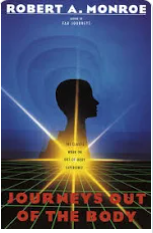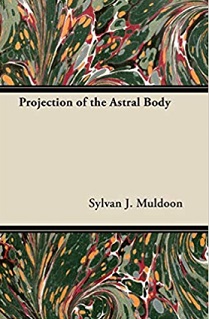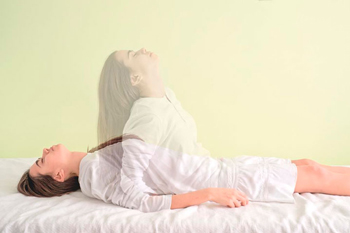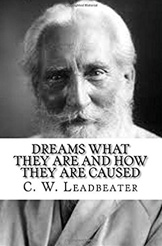Journeys Out of the Body

Robert Monroe had countless out-of-body experiences throughout his lifetime. In this, his first book, he takes us through the early days of the discovery, development, and maturation of his special talent.
In the beginning, he worried a great deal about whether something was wrong with him or not. He sought hard to find an explanation as to what was happening to him. Wherever he looked, however, it always seemed that people had more questions than answers. Eventually he came to accept that he was, for the most part, on his own to explore, discover, and document these unusual experiences that he was having.
On the back cover, the book promises to be a scientific and objective report of out-of-body/subtle-world experiences. Despite that promise, I found there too be too many opinions and overly imaginative interpretations of the facts. More on that later, but for now, let’s talk about how Monroe maps out the landscape of the area we inhabit when out of body.
The body we inhabit when outside of our physical body, he calls the “second body”. That is what we call here the “subtle body” and what has been called “astral body” in other literature. Once in the “second body”, there are 3 main regions it may travel to:
- “Locale I” – A.K.A. the “here-now”. This is essentially the physical plane. All the things, people, and places one sees here are actual existing items in the physical world. Monroe recounts several experiences in which he traveled to different physical places while in his subtle body and then successfully relating events that took place there with astonishing accuracy.
- “Locale II” – As best I can tell, this is what he calls the subtle realm. He says that its most defining feature is its likeness and responsiveness to thought: “Superceding all appears to be one prime law. Locale II is a state of being where that which we label thought is the wellspring of existence. It is the vital creative force that produces energy, assembles “matter” into form, and provides channels of perception and communication … As you think, so you are.” (p. 74) And he continues, “’Mere’ thought is the force that supplies any need or desire, and what you think is the matrix of your action, situation, and position in this greater reality … Like attracts like … Your destination seems to be grounded completely within the framework of your innermost constant motivations, emotions, and desires.” (p. 74-75)
- “Locale III” – This is where things get a little kooky. Monroe’s thesis on “Locale III” is the main reason for me giving this book a 2-star rating. The characteristics he ascribes to do not even remotely resemble anything we’ve read on our extensive “references” page. As far as we can tell he is the only one to assert that in this section of the subtle realm is a “reverse image” reality in which we all have “doubles”, or doppelgangers, living out their own lives in an entirely different alternate reality. When he visits there, he “pops” into the body of his “double” and takes control of it, often at inopportune times for his double, like arguments with his spouse, for example. Monroe says he “popped” into his double’s body, and not knowing why he and his spouse were fighting in the first place, simply returned blank stares and looks of discomfort and confusion. Monroe laments that he caused his double much trouble and anguish for these intrusions into his life. His double eventually divorced and led a solitary, lonely life. Personally, I believe this is a completely fabricated illusion.
In addition to the weirdness of his “Locale III” fantasy, he had a few other oddball interpretations of his experiences in the book that also don’t align with anything else we’ve read and reviewed here at subtlerealm.org. One of which is his description of what “God” is like in Locale II. It one of the was strangest things I have ever heard and it was not something that was even close in resembling anything I’ve come across in any of my other readings.
This book can be very misleading for beginners. One should read this book with great care, finely discriminating between what Monroe actually experienced and his interpretations of those experiences.
It is worth pointing out that, as he himself writes, his experiences began at the same time he had suffered from a mild coronary and when he was under the influence of drugs. This suggests physical and mental imbalance.
Notwithstanding the many oddities, there is still a lot of value in this book. I thoroughly enjoyed reading about his many different experiences and experiments and the need to address and resolve one’s emotional challenges before it is possible to make much progress in the subtle realm. He also gives many tips on how to develop this talent whin oneself. His telling of the stages he went through as his talent developed was most valuable.
In conclusion, while I don’t doubt Robert Monroe regularly and consistently left his physical body and explored the subtle realm in his subtle body, his book contains too many opinions dressed up as facts and this could severely mislead people who are just starting to learn about existence out of the physical body. I was lucky to have read this book after reading several other books about this topic before picking this one up. I suggest beginners do the same.





